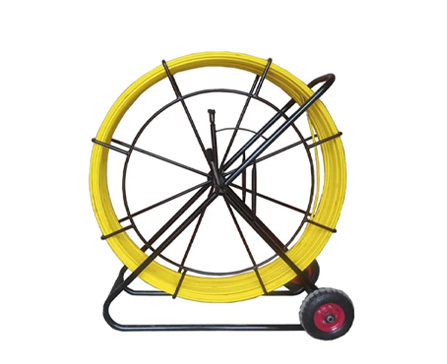
-
 Afrikaans
Afrikaans -
 Albanian
Albanian -
 Amharic
Amharic -
 Arabic
Arabic -
 Armenian
Armenian -
 Azerbaijani
Azerbaijani -
 Basque
Basque -
 Belarusian
Belarusian -
 Bengali
Bengali -
 Bosnian
Bosnian -
 Bulgarian
Bulgarian -
 Catalan
Catalan -
 Cebuano
Cebuano -
 Corsican
Corsican -
 Croatian
Croatian -
 Czech
Czech -
 Danish
Danish -
 Dutch
Dutch -
 English
English -
 Esperanto
Esperanto -
 Estonian
Estonian -
 Finnish
Finnish -
 French
French -
 Frisian
Frisian -
 Galician
Galician -
 Georgian
Georgian -
 German
German -
 Greek
Greek -
 Gujarati
Gujarati -
 Haitian Creole
Haitian Creole -
 hausa
hausa -
 hawaiian
hawaiian -
 Hebrew
Hebrew -
 Hindi
Hindi -
 Miao
Miao -
 Hungarian
Hungarian -
 Icelandic
Icelandic -
 igbo
igbo -
 Indonesian
Indonesian -
 irish
irish -
 Italian
Italian -
 Japanese
Japanese -
 Javanese
Javanese -
 Kannada
Kannada -
 kazakh
kazakh -
 Khmer
Khmer -
 Rwandese
Rwandese -
 Korean
Korean -
 Kurdish
Kurdish -
 Kyrgyz
Kyrgyz -
 Lao
Lao -
 Latin
Latin -
 Latvian
Latvian -
 Lithuanian
Lithuanian -
 Luxembourgish
Luxembourgish -
 Macedonian
Macedonian -
 Malgashi
Malgashi -
 Malay
Malay -
 Malayalam
Malayalam -
 Maltese
Maltese -
 Maori
Maori -
 Marathi
Marathi -
 Mongolian
Mongolian -
 Myanmar
Myanmar -
 Nepali
Nepali -
 Norwegian
Norwegian -
 Norwegian
Norwegian -
 Occitan
Occitan -
 Pashto
Pashto -
 Persian
Persian -
 Polish
Polish -
 Portuguese
Portuguese -
 Punjabi
Punjabi -
 Romanian
Romanian -
 Russian
Russian -
 Samoan
Samoan -
 Scottish Gaelic
Scottish Gaelic -
 Serbian
Serbian -
 Sesotho
Sesotho -
 Shona
Shona -
 Sindhi
Sindhi -
 Sinhala
Sinhala -
 Slovak
Slovak -
 Slovenian
Slovenian -
 Somali
Somali -
 Spanish
Spanish -
 Sundanese
Sundanese -
 Swahili
Swahili -
 Swedish
Swedish -
 Tagalog
Tagalog -
 Tajik
Tajik -
 Tamil
Tamil -
 Tatar
Tatar -
 Telugu
Telugu -
 Thai
Thai -
 Turkish
Turkish -
 Turkmen
Turkmen -
 Ukrainian
Ukrainian -
 Urdu
Urdu -
 Uighur
Uighur -
 Uzbek
Uzbek -
 Vietnamese
Vietnamese -
 Welsh
Welsh -
 Bantu
Bantu -
 Yiddish
Yiddish -
 Yoruba
Yoruba -
 Zulu
Zulu


Nov . 08, 2024 01:59 Back to list
Hydraulic Pipe Fitting Equipment for Efficient Plumbing Solutions and Precision Engineering
Hydraulic Pipe Fitting Machines Revolutionizing Pipe Assembly
In the ever-evolving construction and manufacturing industries, efficiency and precision play crucial roles in the successful execution of projects. One of the significant advancements that have emerged in recent years is the hydraulic pipe fitting machine. This equipment has transformed the way pipe assemblies are handled, offering remarkable advantages that streamline processes and improve overall productivity.
Hydraulic pipe fitting machines are specifically designed to manipulate and assemble piping systems, especially those used in plumbing, gas distribution, and industrial applications. Using hydraulic power, these machines deliver high torque and strength, which enables them to perform tasks that are often too challenging for manual labor. With such capabilities, they not only reduce the effort required but also ensure uniformity and consistency in fittings.
The operation of a hydraulic pipe fitting machine is relatively simple yet highly effective. The machine typically comprises a hydraulic pump, a set of dies, and a control panel. When a piece of pipe is inserted into the machine, the operator selects the appropriate die for the fitting type. The hydraulic pump then applies pressure to compress and shape the pipe according to the specified dimensions. This process ensures a perfect fit, reducing the risk of leaks and failures in the piping system.
One of the significant advantages of using hydraulic pipe fitting machines is the increase in production speed. Unlike manual fitting, which can be time-consuming and labor-intensive, hydraulic machines dramatically reduce the time required for each assembly. This efficiency is particularly beneficial in large-scale projects where time is of the essence. By utilizing hydraulic machines, companies can complete projects more quickly, meet deadlines, and save on labor costs.
hydraulic pipe fitting machine

Additionally, these machines enhance safety in the workplace. Manual handling of heavy pipes and fittings often poses risks of splinters, strains, and other injuries. However, with hydraulic pipe fitting machines, the operation is automated, minimizing human interaction with the physical labor. This shift not only improves safety but also allows workers to focus on more complex tasks that require skill and expertise.
Moreover, hydraulic machines are designed to handle a variety of pipe sizes and materials, making them versatile tools for different applications. Whether it's PVC, steel, or copper piping, these machines can easily adapt to meet specific requirements. This versatility allows manufacturers and contractors to utilize a single machine for multiple projects, thus reducing the need for specialized equipment and saving on costs.
Despite these advantages, it’s important to note that hydraulic pipe fitting machines require proper maintenance to ensure longevity and optimal performance. Regular inspections, timely servicing, and adherence to safety standards are crucial in keeping the machines running efficiently. Furthermore, operators must be trained adequately to handle the equipment, ensuring they understand its mechanisms and functions.
In conclusion, the introduction of hydraulic pipe fitting machines has brought about a significant change in the way piping systems are assembled. By enhancing efficiency, ensuring precision, improving workplace safety, and offering versatility, they stand out as indispensable tools in modern manufacturing and construction. As industries continue to grow and evolve, the reliance on such advanced technologies is likely to increase, reinforcing the notion that hydraulic pipe fitting machines are here to stay and revolutionize the way we approach pipe assembly.
Latest news
What Are Construction Tools and How Are They Used?
NewsJul.11,2025
Professional-Grade Duct Rodding Tools for Superior Cable Installation
NewsJul.11,2025
Enhancing Safety and Efficiency with Modern Hot Stick Solutions
NewsJul.11,2025
Empowering Cable Installation with Advanced Rodder Solutions
NewsJul.11,2025
Elevate Your Cable Installation Projects with Cable Pulling Tools
NewsJul.11,2025
Efficient Cable Handling Solutions: Cable Rollers for Sale
NewsJul.11,2025











